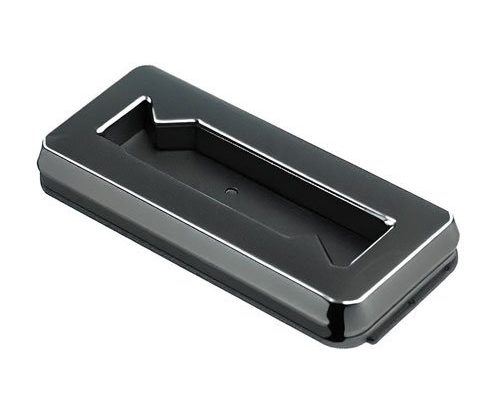CNC machining is at the heart of modern manufacturing, enabling companies to produce intricate components with high precision. For precision companies, understanding the intricate dynamics of CNC turning and milling can lead to significant operational improvements. This article delves deep into these two essential CNC processes and explores how their integration can enhance efficiency, quality, and overall productivity.
Understanding CNC Machining: A Brief Overview
What is CNC Machining?
CNC (Computer Numerical Control) machining is a manufacturing process that utilizes pre-programmed computer software to control the movement of factory tools and machinery. This methodology enables the automated production of highly precise parts across various materials, including metals and plastics.
Key Processes in CNC Machining
CNC machining encompasses several processes, mainly CNC turning and CNC milling.
- CNC Turning: This process involves rotating a workpiece on a lathe while a cutting tool removes material, shaping it into a desired form.
- CNC Milling: In contrast, milling involves moving a rotating cutting tool across a stationary workpiece to remove material and create complex shapes.
Both methods offer unique advantages and can be leveraged to create high-quality components.
The Importance of Precision in CNC Machining
Why Precision Matters
In industries ranging from aerospace to automotive, precision is non-negotiable. High-precision components are essential for ensuring safety, reliability, and performance. Deviations as minute as a few microns can result in catastrophic failures in critical applications.
How CNC Machining Ensures Precision
CNC machinery operates on computer algorithms that dictate movements with extreme accuracy. Features such as:
- Programmable Logic Control (PLC): Ensures real-time adjustments and minimizes errors.
- Feedback Systems: Provide continuous monitoring of speeds, positions, and orientations.
These characteristics make CNC machining systems highly effective in achieving precision.
Improving Efficiency with CNC Turning and Milling Techniques
- Streamlining Workflows
Optimized Toolpath Planning
One of the most effective ways to enhance efficiency is through optimized toolpath planning in both CNC turning and milling. Implementing advanced software solutions can significantly reduce cycle times and material waste.
Setup Time Reduction
Efficient setup procedures minimize downtime between jobs. Techniques such as fixture designs can streamline this process, leading to faster changeovers.
- Enhanced Tooling Strategies
Tool Selection
Using the right cutting tools is critical. High-speed steel (HSS) or carbide tools can significantly improve cutting speeds and prolong tool life, resulting in less frequent replacements.
Tool Condition Monitoring
Incorporating IoT technology allows for real-time monitoring of tool conditions, enabling predictive maintenance that can avert unexpected downtime.
- Integrating Workholding Solutions
Importance of Workholding Systems
Stable and precise workholding systems are vital for maintaining the accuracy of parts. From vises to specialized fixtures, the right workholding can drastically reduce vibration, leading to better surface finishes and component accuracy.
Adaptive Workholding Technologies
Advancements in adaptive workholding technologies can adjust to different parts automatically, improving flexibility and efficiency during multi-part machining.
- Utilizing Advanced Software Solutions
CAD/CAM Integration
Integrating Computer-Aided Design (CAD) with Computer-Aided Manufacturing (CAM) enables seamless transitions from design to production. This amalgamation reduces errors and enhances communication between the design and manufacturing teams.
Simulation Software
Advanced simulation software allows engineers to anticipate potential issues before they arise on the shop floor. By modeling the machining process, they can rectify potential problems and optimize workflows without incurring extra costs.
Case Studies: Success Stories in CNC Efficiency
Case Study 1: Aerospace Component Production
A leading aerospace manufacturer implemented a dual approach, integrating both CNC turning and milling techniques. By synchronizing their workflows and utilizing advanced CAD/CAM systems, they reduced production times by 30% while improving the quality of their components.
Case Study 2: Automotive Industry Adaptation
An automotive precision parts manufacturer leveraged real-time tool condition monitoring and automated workholding systems. This not only minimized downtime but also enhanced on-time delivery rates from 70% to 95% in a span of six months.
Future Trends in CNC Machining Technologies
- Automation and Robotics
The integration of robots and automated systems in CNC machining plants is on the rise. Automation enhances efficiency by taking over repetitive tasks, allowing human workers to focus on high-value activities.
- Artificial Intelligence
AI technologies are emerging as key players in improving CNC machining processes. Machine learning can analyze vast amounts of production data, optimizing machine parameters, predicting maintenance needs, and even enhancing design choices.
- Sustainable Practices
As industries increasingly focus on sustainability, CNC machining is evolving. Techniques like minimal cutting fluid usage, recycling scrap materials, and energy-efficient machinery are becoming standard practices, enhancing not only efficiency but also environmental responsibility.
Wrapping Up: The Path to Efficiency in Precision CNC Machining
Key Takeaways
Bringing together the strengths of CNC turning and milling techniques positions precision companies for success. By focusing on optimizing workflows, enhancing tooling strategies, integrating sophisticated software, and embracing emerging technologies, these companies can significantly bolster their productivity and output quality.
Your Next Steps
Are you ready to elevate your precision manufacturing capabilities? Optimization begins with understanding your CNC machining needs. Connect with experts in CNC technology to explore tailored solutions that can enhance your operations today.
Through diligent enhancements in CNC turning and milling processes, companies can not only stay competitive but propel themselves into the next era of precision manufacturing. Now is the time to leverage these advancements and harness the potential of modern CNC machining.
—
- This framework ensures a thorough yet inviting exploration of CNC machining practices within precision companies, appealing to both seasoned professionals and individuals new to the field. The focus on technical details combined with practical applications and future trends provides readers with valuable insights that can drive action and foster connections.


